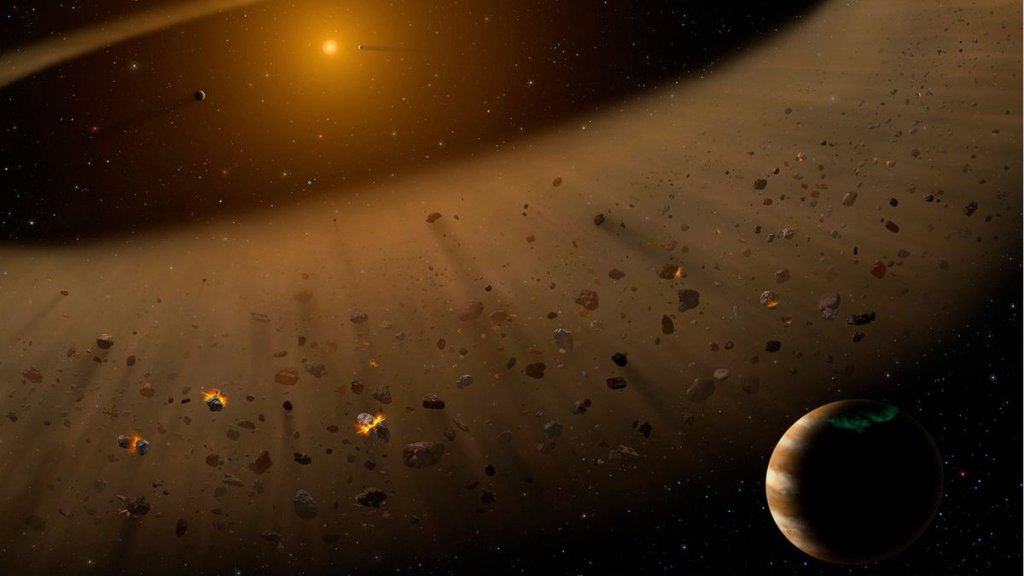A galactic archaeology project has revealed the Milky Way’s neighboring galaxy, Andromeda, has a violent and dramatic history.
An international team of astrophysicists looked at the chemical compositions of stars in Andromeda, which is the closest large galaxy to our own. The goal wasto reconstruct its past. Sure enough, after examining the abundance of elements in Andromeda and considering the fact this galaxy possesses both planetary nebulas — gas and dust blown away from dying low-mass stars — and red giant stars, the researchers concluded that it experienced dramatic and forceful formation.
In fact, the team thinks the creation of the Andromeda galaxy was more turbulent than the origins of the Milky Way. They theorize that Andromeda initially experienced a burst of intense star formation that created the galaxy’s foundation, with a secondary period of star birth happening between 2 billion and 4.5 billion years ago.
“Although in many ways Andromeda is similar to our own Milky Way — it’s a similarly-sized, spiral disc galaxy — our new research confirms that its history is far more intense and dramatic, with bursts of activity forming stars in abundance, and two distinct eras of star formation,” team leader and University of Hertfordshire professor of astrophysics Chiaki Kobayashi said in a statement.
Related: Astronomers weigh ancient galaxies’ dark matter haloes for 1st time
The idea is the second starburst period was triggered when the gas-rich Andromeda collided and merged with another galaxy, also replete with gas, in an event that astronomers call a “wet merger.” The influx of gas in such a merger acts as the fuel to kick-start yet more bouts of star formation.
Andromeda isn’t finished clashing with other galaxies
Scientists have long thought that Andromeda experienced collisions and mergers with other galaxies in its past, thanks to the positions and motions of its individual stars, the stars started out in another galaxy.
Further, by looking at the chemical compositions of these stars, the team found two distinct signatures in the disc components of Andromeda. One family of stars appeared to have ten times more oxygen than iron, while the other group appeared to have similar amounts of both elements. This bit adds a new dimension to the understanding of this galaxy’s past, revealing more about the nature of the suggested collision and its effect on Andromeda’s stellar population.
“This is a fantastic example of how galactic archaeology can provide fresh new insights into the history of our universe,” Kobayashi added. “By analyzing the chemical abundance in different ages of stars in Andromeda, we can bring to life its history and better understand its origins.”
Thus, Andromeda likely has a history of violence — and its future looks to be equally turbulent, with our own galaxy set to become part of its neighbor’s chaotic existence. This is because the Milky Way and Andromeda are currently on a collision course, set to slam into each other in around 4.5 billion years. This titanic collision will give both galaxies a severe makeover, wiping out the distinctive arms of both spiral galaxies.
The stellar population of the Milky Way and Andromeda, which is currently about 2.5 billion light years away from us, will not slam into each other but will survive to be thrown into new orbits around a new galactic center. Our own star, the sun, and the entire solar system are likely to be pushed away from the new galactic core, moving toward the outskirts of the resultant new galaxy.
The team’s findings add to Kobayashi’s continuing investigation of the origins of the chemical elements throughout the cosmos.
“Oxygen is one of the so-called alpha-elements produced by massive stars. The others are neon, magnesium, silicon, sulfur, argon, and calcium,” she explained. “Oxygen and argon have been measured with planetary nebulae, but Andromeda is so far away that the James Webb Space Telescope (JWST) is required to measure other elements, including iron.
“In coming years, JWST and ground-based large telescopes will keep looking at Andromeda — giving further weight to the new findings.”
The team’s work was published Oct. 10 in The Astrophysical Journal Letters.

